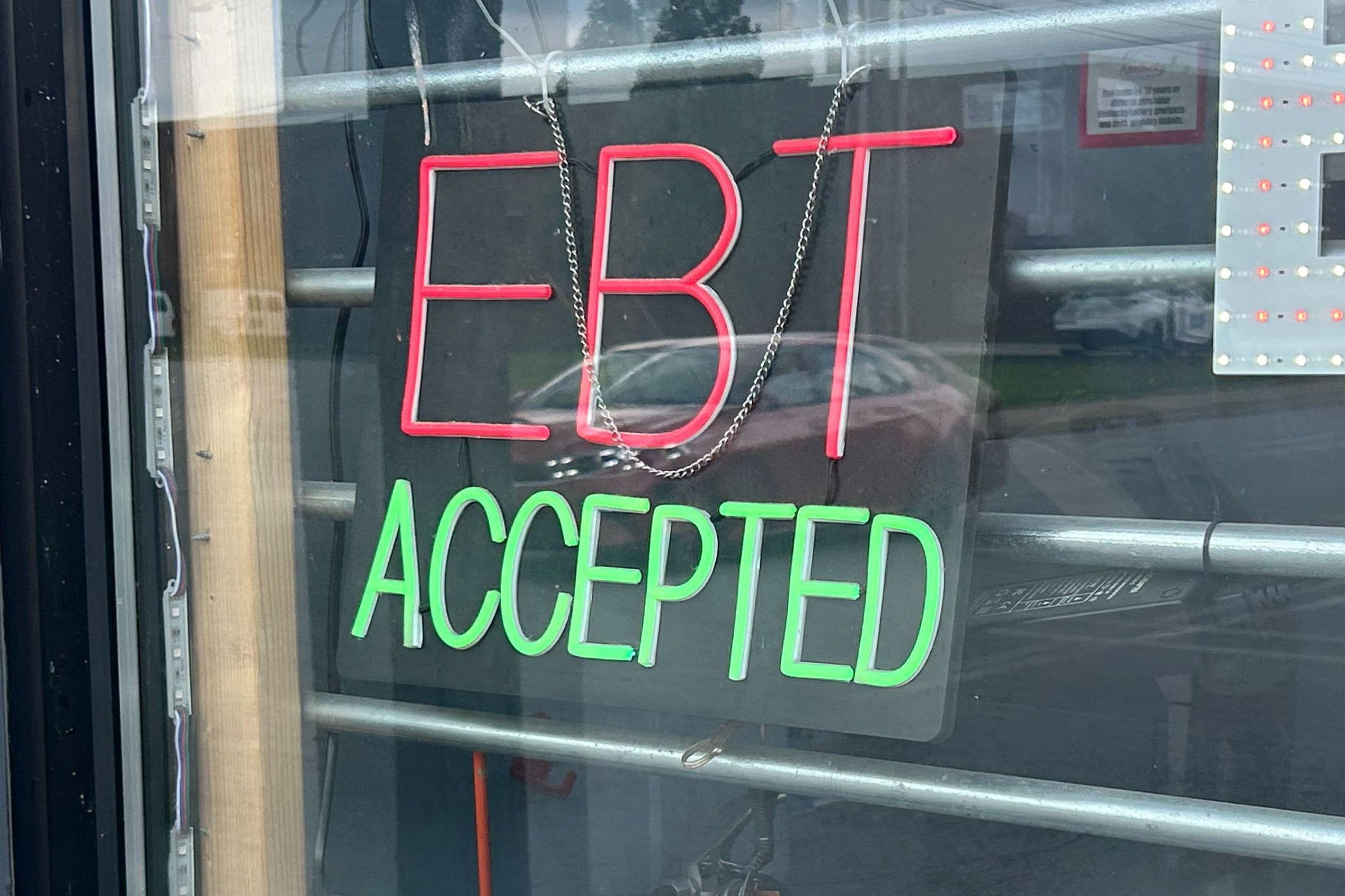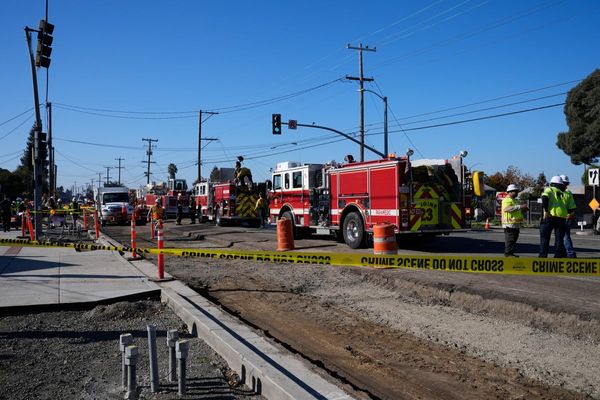Millions of the poorest Americans may lose access to food stamps next month as the government shutdown stretches on with no clear end in sight.
Roughly 42 million low-income Americans who receive Supplemental Nutritional Assistance Program benefits, also known as SNAP, will likely see their aid disrupted next month if Congress does not resolve its budget stalemate.
The U.S. Department of Agriculture, which runs the food stamp program, noted in a letter to states last week that the federal government would have “insufficient funds” for November.
As a result, over a dozen states have issued warnings to residents that they may experience delays in receiving food assistance, have their aid reduced, or not receive assistance at all.
In the letter, obtained by The New York Times, the USDA directed state agencies to pause distributing funds to recipients' Electronic Benefits Transfer (EBT) cards. While SNAP is federally funded and run by the USDA, states are responsible for administering benefits to residents in need.
“We’re going to run out of money in two weeks,” Brooke Rollins, the agriculture secretary, told reporters at the White House on Thursday. “So you’re talking about millions and millions of vulnerable families, of hungry families that are not going to have access to these programs because of this shutdown.”
In a statement to The Times, a White House official said that Democrats “chose to shut down the government knowing that programs like SNAP would soon run out of funds.”
When reached by The Independent, White House spokesperson Abigail Jackson blamed the Democrats for the shutdown, writing in a statement, “The Democrats’ decision to shut down the government is hurting Americans across the country. While Chuck Schumer thinks every day of the shutdown ‘gets better,’ the Trump Administration and the American people know the reality: it doesn’t.”
The Trump administration and congressional Democrats have spent weeks trying to cast blame on the other for the shutdown, but have swept the country's most vulnerable families into the crossfire as the shutdown continues with no signs of ending.
On average, SNAP recipients receive about $188 per person per month, or about $6 per day. The money is administered on prepaid cards that they can use to buy produce, meat, dairy products and other grocery staples.
SNAP’s emergency contingency fund currently has about $6 billion, but the program would need $8.1 billion to cover November benefits, the USDA said.
Without the government aid, states have warned residents that their benefits will soon be up, with some local officials even pointing fingers at Republicans for the pause in spending.
Officials in Pennsylvania warned the approximately 2 million residents reliant on SNAP that they will not receive food assistance until the government shutdown is over.
“Because Republicans in Washington, D.C., failed to pass a federal budget, causing the federal government shutdown, November 2025 SNAP benefits cannot be paid, an alert on the state’s SNAP website read.
Illinois Department of Human Services officials noted that “SNAP is a 100 percent federally funded benefit and the federal government withholding payments to the state would impact all 1.9 million recipients in Illinois.”
“The state administers more than $350 million in SNAP benefits each month, funding that feeds families in every corner of the State,” officials added, noting the state does not have the budgetary ability to backfill the resources.
Missouri’s Department of Social Services website notes that residents’ November SNAP benefits “may be delayed or may not be provided at all, depending on what the federal government decides.”
Texas, New York, New Jersey and Maryland have all issued similar notices to residents.

While SNAP is entirely federally funded, each state chooses how it administers the benefits, meaning the shutdown’s impact on SNAP varies state by state.
Advocates have warned that the impacts of the lapse in funding could be devastating to millions of Americans.
Crystal FitzSimons, the president of Food Research & Action Center, a Washington, D.C., nonprofit organization, noted that USDA must ensure funding is available for SNAP so participants can continue to receive benefits as they have during previous shutdowns.
“SNAP not only fuels families, it bolsters our farmers, food retailers, and our overall economy. Just as the administration has found ways to protect its other priorities during this shutdown, it must also act with the same urgency to protect SNAP,” FitzSimons said in a statement.
“USDA should utilize its contingency reserves and any additional funding sources to ensure that benefits are not disrupted. Time is running out. USDA must act quickly to support the power and promise of SNAP. The health and strength of our nation depends on it.”
“Even states that are going to try to do their best are going to face really difficult choices. And unless this is undone, it really is the end — and I’m not being dramatic, it’s a reality — of SNAP as we know it,” Gina Plata-Nino, interim director for SNAP at the nonprofit Food Research and Action Center, told the New York Times.
The shutdown, now in its 21st day, is the second-longest in U.S. history. The longest shutdown, under Trump’s first term, spanning the end of 2018 and into 2019, lasted 35 days.
During that government shutdown, the USDA disbursed SNAP funds early to prevent benefits from running out.
“This administration didn’t do any of that [this time], but they still have the contingency funding…” Plata-Nino told CBS News. “They have the money, so it really is a policy choice.”
States may also try to free up money from their own budgets to supplement the loss, though it would cost tens of millions of dollars that the federal government may not reimburse.
The Independent has reached out to the USDA for comment.
Prince Andrew told to leave public life for ever after embarrassing royals: Latest
Ex-Amazon driver sues civil rights agency for dropping her case following Trump's executive order
British troops sent to Israel to monitor Gaza ceasefire
Pressure mounts on Andrew over 30-room Windsor mansion
Trump demands DOJ pay him $230M for cases against him
Trump introduces Star Wars villain as GOP hero in rambling ‘Rose Garden Club’ lunch







